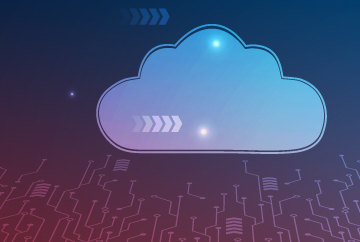Thomas Siebel, in his book “Digital Transformation: Survive & Thrive in the Era of Mass Extinction,” postulates that digital transformation is animated by the intersection and interaction of three foundational technologies: Cloud, Big Data, and AI. A successful transformation is based on the mastery over these technologies. This blog focuses on one of these technologies, i.e., cloud.
A Case for Cloud Spend Management
In 2011, the National Institute of Standards & Technology in the United States published a definition of cloud computing, outlining its five essential characteristics:
- On-Demand, Self-Service
- Broad Network Access
- Resource Pooling
- Rapid Elasticity
- Measured Service
This suggests that cloud is simultaneously a technology, a consumption platform, and a commercial model.
Understanding Cloud Computing
Cloud computing is a broad term that refers to the collection and delivery of on-demand computing services. With cloud computing, businesses can rent access to anything -- from applications to storage -- from a cloud provider instead of owning computing infrastructure or data centers. Depending on requirements, businesses can choose where, when, and how to use cloud to improve IT capacities.
Cloud Computing Service Models
There are three main service models of cloud computing – Infrastructure-as-a-Service (IaaS), Platform-as-a-Service (PaaS), and Software-as-a-Service (SaaS).
IaaS
It is the most common model that offers the fundamental infrastructure of virtual servers, operating systems, data storage drives, and networks. A fully outsourced pay-for-use model, it provides flexibility, scalability, and reliability that businesses seek with cloud.
SaaS
This model involves the deployment of applications-as-a-service over the internet to various businesses that use a pay-per-use or pay-per-seat model. Common use cases are CRM, ERM and ESM suites.
PaaS
This is a scalable model where cloud providers deploy infrastructure and software frameworks, but businesses develop and run their applications. PaaS allows the creation of applications (using low-code, no-code paradigms) and is sufficiently flexible and robust to support business critical workloads.
How Expensive is Cloud Computing?
Well, the truth is that cloud isn’t as cheap as experts claim! While cloud providers sell it as a cost-effective technology, the reality is cloud can be more expensive due to the cost of talent required, operations, and migrations. Additionally, cloud computing can quickly turn into a massive expense if not managed adequately, especially from the perspective of consumption, capacity and utilization.
Introduction to Cloud Elasticity
Businesses that adopt cloud can look forward to several benefits, beyond cost. An advantage exclusive to cloud computing is elasticity. Elasticity in cloud computing is the exercise of allocating the right amount of resources to a workload at the appropriate time and pulling it back when not required.
When exploiting elasticity on the cloud, these three factors inform design decisions:
Resource Provisioning Time
The time it takes to provision the resources on demand. This could vary from provider to provider and from time to time, impacting workload performance.
Monitoring
As workloads (or applications) are allocated resources on-demand, traditional monitoring tools fall short and need reconsideration.
Multi-Level Controls
The control over elasticity at each level needs to be considered. Several strategies are employed, with predictive methods showing better outcomes than reactive ones.
A key factor here is that workloads need to be designed to exploit elasticity. If they cannot, there needs to be a rethinking of architecture or placement of workloads on the public cloud in the first place. Workload analysis and placement strategy is something that should be illuminated by a pre-study and guidelines for moving to the cloud.
How to Pay for Cloud Services?
The idea behind cloud is consumers pay only for what is consumed, but this can be tricky to manage without proper planning.
While cloud providers usually offer frequent utilization updates and a monthly billing statement, it is up to consumers to make sense of data and utilize it for management decisions, such as:
- Automating workloads so that they release resources when not in use
- Setting up budget limits so that there is adequate warning of potential breaches
- Managing and optimizing the consumption of cloud storage
Cloud services are available in two structures – non-metered and metered.
A non-metered structure is where providers charge a fixed sum for a fixed monthly capacity and service level. Some providers also provide a true-up window to allow consumers to look at the actual utilization and reclaim fees if it is significantly lower. While this beats the point of cloud adoption, it would be an acceptable middle ground between traditional on-prem IT estates with fixed costs and the flexibility of the public cloud for some businesses.
The metered system, also known as the pay-per-use structure, is an offering where you are charged based on the actual usage of the service. A metered service allows customers to select configurations for a particular service and volume to meet their requirements. It is slowly gaining popularity among consumers due to its many benefits, such as allowing businesses to attribute various usages to their specific needs and not overpay.
Today, businesses have a wide range of cloud spend management platforms to choose from, including some provided by hyper-scalers themselves. However, they need to decide what works best for them before making that decision. It is becoming evident that the lack of long-term visibility is one of the biggest challenges in the optimization of cloud spend management. It is important to put in place this systemic capability before accelerating cloud adoption. It is only with a clear vision and strategy that a business can implement a modern cloud environment and be on the right track to reap its benefits.
More from this Author
Recommended
Infrastructure and Cloud Technology | 5 min Read
Digital Transformation | 3 min Read



